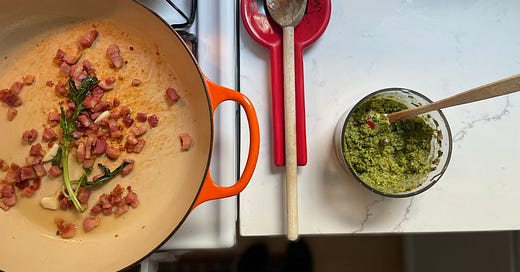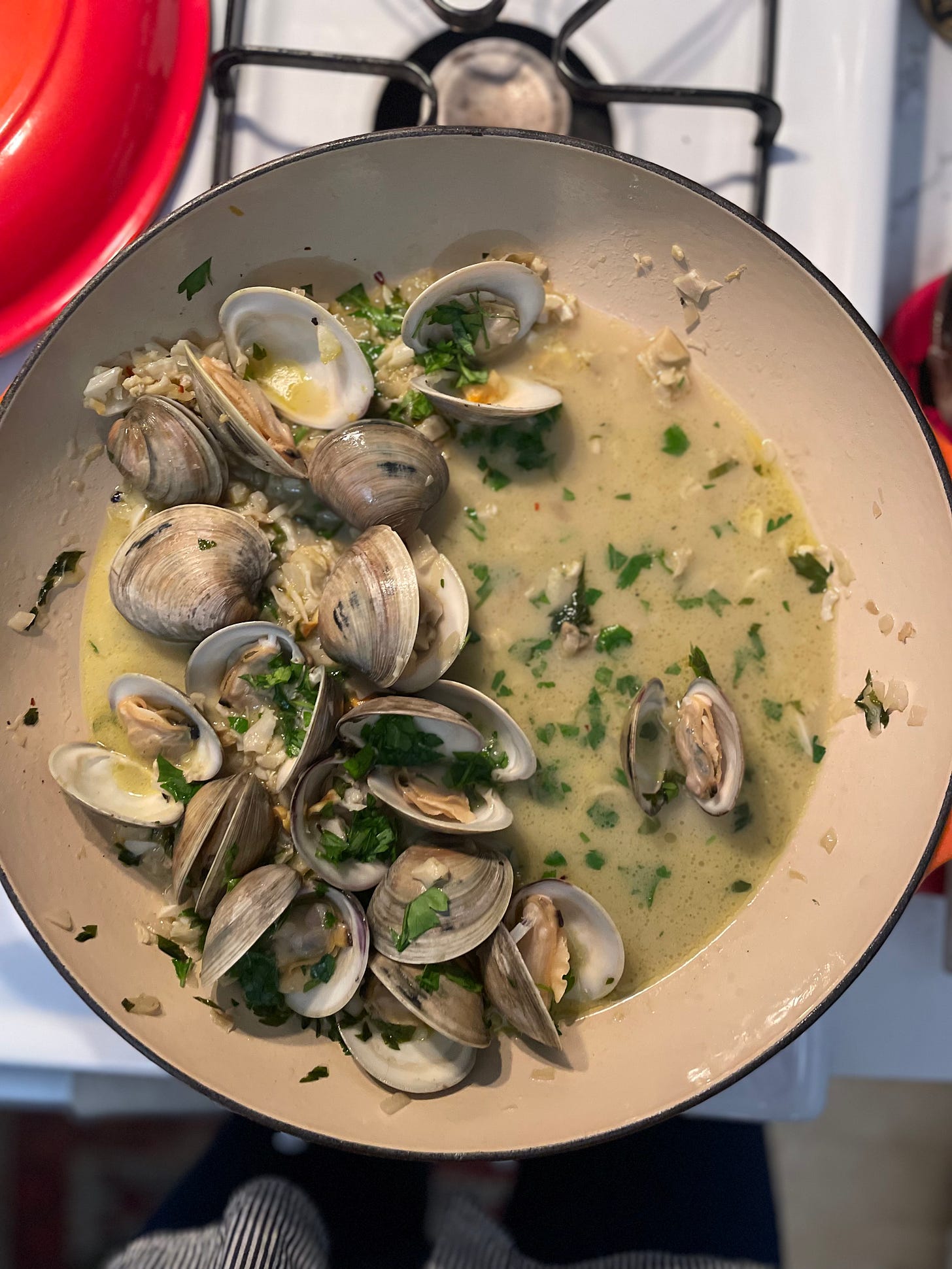Over the years, I’ve had an on-again, off-again flirtation with recipe writing. We were pretty hot and heavy like 10 years ago, when I was into clever tricks like turning the contents of spanakopita into omelets and using pickled jalapeño juice in my salad dressing.
“Tell me more,” recipe writing teased. “Maybe one day you could even fill a cookbook!”
Whoa, is it hot in here?
Things cooled off when restaurant coverage and I got a more serious, but recipe writing and I still had our flings, like the time I came home from a trip to Sicily, where I’d had a one-night-stand with the (new-to-me) combination of oil-packed tuna, pistachios and mint.
I’m in love! I’m in love! And I want everyone to know it!
I knew it couldn’t last; recipe writing is far too fickle and hard to please. But just when I’d think I left it for good, it would show up in the produce department and graze my arm suggestively while I was, say, holding a cucumber.
“No one’s ever seared cucumbers and put them in couscous salad with tahini dressing before,” it whispered. (This was a lie of course, but I’m easy when it comes to this sort of thing.)
The truth is, recipe writing in our globalized, online era is positively insatiable. It is forever slutty for what’s next and new. It wants simplicity and wow factor, delivered in a tight 30 minutes. It wants cleverness with everyday pantry ingredients. It wants meatless, but not diet. It wants substitutions that work flawlessly. It wants 17 new ways to make the same old Thanksgiving dinner. It wants creative leftover hacks and pasta that’s not pasta. It wants unfried fried food.
It wants! It wants! It wants!
You’d be hard-pressed to find a more engaged audience than the serious home cook. Seriously, just spend a little time in the comments sections of Food52 recipes or New York Times Cooking. The sophistication with which people engage with those dishes is astonishing. Consider, for example, this comment from Mary on cookbook author Ali Slagle’s recipe for Shrimp Scampi with Orzo (which has a casual 13,715 ratings averaging five stars):
“I found simply placing the marinated shrimp on top of the orzo to steam left a slight raw garlic taste, will try again, lightly sauteing (but not fully cooking) the marinated shrimp in the butter and olive oil first to avoid raw garlic taste, removing shrimp, proceeding with the orzo, then finishing by steaming shrimp on orzo at the end. Agree on reducing the amount of liquid to 1-1/2 cups stock. I made quick shrimp stock from the shells removed from shrimp. Nice, light, flavorful dish.”
Like, what?
Ali is responsible for some of the most popular recipes of all time—all time!—on NYT Cooking. Searching for her name on the site yields 397 results, which include her five-star Crisp Gnocchi with Brussels Sprouts and Brown Butter (18,052 ratings—a positive stunner of a dish) and Turmeric-Black Pepper Chicken with Asparagus (16,204 ratings—an umami dream). She’s also the author of the glorious 2022 cookbook I Dream of Dinner (So You Don’t Have To). Ali has a gift for dreaming up uncommonly craveable dishes that are also dead simple, owing to her steadfast commitment to eliminating extraneous ingredients and steps. (“Do these sloppy joes really require both tomato paste and tomato purée?” is a question she’d ask while tackling an adaptation.)
I emailed her last week to ask how on earth she keeps finding inspiration for new recipes to feed the voracious, seasoned home cook. The short answer? Everywhere. She browses supermarket aisles and pores over restaurant menus and new and old cookbooks. She looks for fun flavor combinations in the snack aisles at gas stations, Target and the like. She is forever plumbing the troves of good old-fashioned comfort food from childhood.
“Sometimes I feel like I can't not think of new recipe ideas,” she said.
Isn’t that wonderful? Like an artist seeing subject matter where the rest of us see daily life with its relentless obligations. Another meal to get on the table and not enough time. Too many ribs of celery left on the stalk, not enough ground beef for a meal, a few stale chip crumbles left in the bag: These all represent Ali’s beautiful, prosaic muses.
It’s a joyful recasting of the old, familiar dread with which many of us approach feeding ourselves day in and out. Even if we can’t wholly adopt it, we can access that fleeting gratification of making something clever and delicious for ourselves and those we love by simply following those first tracks Ali made in the snow—which are by no means the only way to get there (I mean, just look at the comments section).
Interestingly, what finally liberated me creatively as a home cook was letting go of recipe writing as a professional possibility. Once the pressure was off, all I had to worry about was the mundane, beautiful grind of getting another meal on the table, and the ideas started to flow again.
Recipe writing had dumped me long before then anyway. I guess it never forgave me for shit talking it in that piece I wrote called “Don’t F*ck with Thanksgiving.”






NYT Food comments section is my favorite comments section of all time.
Oil packed tuna, pistachios, mint…..I’m listening… 👀